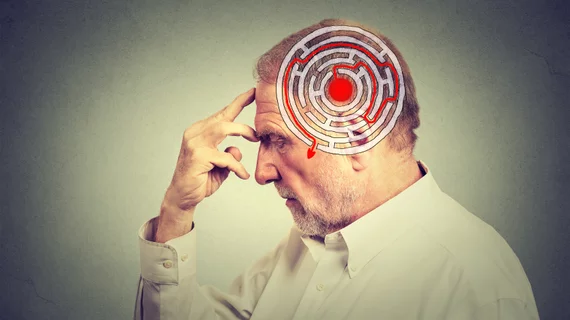A 12-week round of robotic arm rehabilitation might improve speech and language outcomes in chronic stroke patients with aphasia, according to preliminary results of a small-scale study published in Frontiers in Neurology.
The study, which enrolled 17 stroke patients from a hemiparesis rehabilitation center, is rooted in an initial observation by coauthor Dylan J. Edwards, PhD, PT, who, during his time at Weill Cornell Medicine, noted stroke patients seemed to process speech and language better after a three-month course of robotic arm therapy. A 2007 report had raised the idea years ago, but that trial focused on robotic arm treatment preceded by transcranial direct current stimulation (tDCS), which was hypothesized to promote speech-language recovery.
“There is a need for efficient interventions to expedite and enhance recovery,” Edwards et al. said in the journal. “We explored the possibility that treatment in one domain—motor function—may benefit performance in another, untreated domain—communication—in individuals with acquired aphasia and/or apraxia of speech. Synergistic effects of treatment across domains could provide a transformational approach to stroke rehabilitation.”
Edwards and his team evaluated the utility of robotic arm rehabilitation in 17 chronic stroke survivors, all of whom had suffered a left hemisphere stroke resulting in compromised motor function on their right sides. Patients were assigned to an hour of treatment with robot-assisted therapy paired with 20 minutes of either active or sham tDCS.
Before and after the 12-week, 36-session course of treatment, Edwards and colleagues evaluated patients’ speech and language function using three tests: diadochokinesis, category naming and comprehensive speech-language battery, which was measured with the Western Aphasia Battery-Revised (WAB-R) score. Physicians also performed a Fugl-Meyer (FM) assessment—a standardized test of upper extremity abilities—on all patients before and after rehabilitation.
The authors said patients scored better on all three tests, as well as the FM assessment, after three months of robotic arm rehab. Paired t-tests found diadochokinetic task scores improved an average of 3.19 points over the course of study, category-naming abilities improved by an average 3.27 items and WAB-R scores improved by 2.51 points. FM scores also increased, from 27.3 pre-treatment to 35.4 post-treatment.
In spite of those improvements, Edwards et al. said tDCS had little to do with the study’s results. The researchers didn’t note any difference in performance between patients who received active tDCS or sham therapy, and the study’s sample size was too small to note any nuances.
“In our data, chronic stroke participants with speech and/or language impairment exhibited detectable improvement on speech-language measures following intensive robotic arm rehabilitation,” the authors wrote. “Critically, this improvement was observed in the absence of speech-language therapy, suggesting the possibility of synergistic effects across these distinct domains of stroke recovery.”
Edwards and coauthors said the study has helped offer insight into speech-language recovery in chronic stroke patients, but, mostly due to the small sample size, their results should be interpreted carefully.
“The positive overall findings should be treated cautiously in the absence of a control group not receiving robotics,” they said. “This work indicates the importance of considering approaches to stroke rehabilitation across different domains of impairment, and warrants additional exploration of the possibility that robotic arm motor treatment may enhance rehabilitation for speech and language outcomes.”

